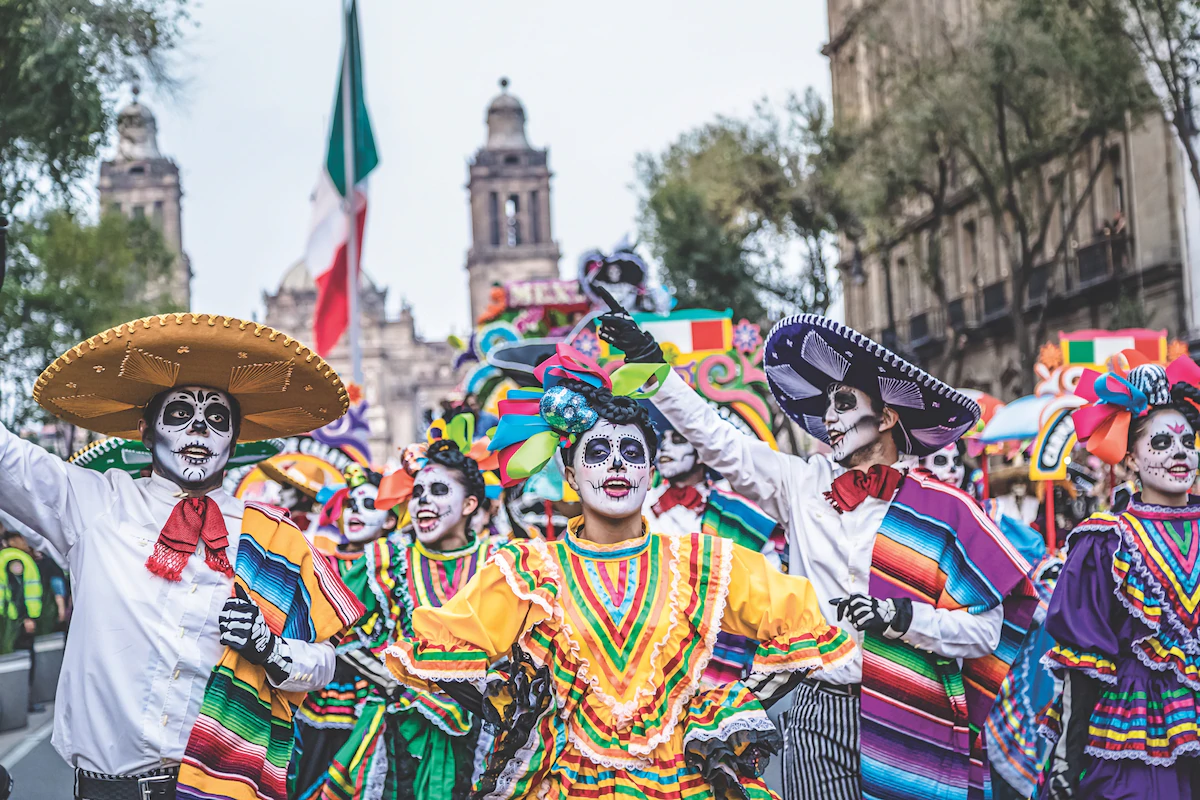If you have seen the animated movie Coco, you likely have a general idea of what Dia de los Muertos is about.
Among Mexico’s many traditions lies one of the most fascinating cultural celebrations, Dia de los Muertos, or the Day of the Dead. This Mexican holiday honours departed loved ones while embracing the continuity of life and the cycle of death. It is deeply rooted in pre-Hispanic indigenous traditions and later influenced by Catholicism.
Origins and significance
The origins of Dia de los Muertos can be traced back over 3,000 years to the indigenous peoples of Mexico, particularly the Aztecs, Toltecs, and other Mesoamerican civilisations. These ancient cultures viewed death as a natural part of life and believed that during this time, the souls of the departed could return to visit their living relatives.
Contrary to the solemn ceremonies of death in many cultures, Dia de los Muertos is a joyful celebration of remembrance, love, and togetherness.
Dia de los Muertos is not a single-day event but a multi-day festival that begins on October 31 and concludes on November 2. Each day holds different customs:
Day 1, October 31 – All hallows’ eve (Noche de Animas)
The celebration commences with Noche de Animas, when children make altars for deceased children, known as “angelitos.”
Families visit cemeteries, clean and decorate the graves with flowers, candles, and offerings, preparing to welcome the souls of their little ones back to the world of the living.
Day 2, November 1 – All Saints’ Day (Dia de Todos los Santos)
Known as the Day of the Innocents, this day is dedicated to honouring deceased adults. Families continue to visit cemeteries, adorned with flowers and food, inviting the spirits to join the festivities. Homes are decorated with colourful ofrendas (altars) decorated with photos of the departed, their favourite foods, drinks, and other cherished possessions.
Day 3, November 2 – All Souls’ Day (Dia de los Fieles Difuntos)
The final day of the celebration, Dia de los Fieles Difuntos, is when the spirits of the deceased adult family members are welcomed back to the world of the living. Families gather to honour their ancestors with music, dance, and storytelling, sharing fond memories about their departed loved ones.
Ofrendas – Altars of love and memory
The centrepiece of Dia de los Muertos is the “ofrenda,” an altar assembled in homes, public spaces, and cemeteries.
The ofrenda is a personal tribute to the deceased, carefully designed to guide their spirits back to the realm of the living. Each altar has a unique design and varies from family to family, but they typically include essential elements such as:
1. Marigolds (cempasúchil)
These orange flowers symbolise death and are believed to guide the spirits with their flashy and strong fragrance.
2. Calacas and calaveras
These are skeleton and skull figures, which are present during the celebration.
They are usually depicted in joyful and festive settings, conveying the idea that death is an inseparable part of life.
3. Pan de muerto
This is a sweet bread shaped like bones and dusted with sugar. It is an important part of the ofrenda, representing the communion between the living and the dead.
4. Water and salt
This combination will quench the thirst of the spirits after their long journey back, and purify and cleanse their souls.
5. Photos and belongings
The altar is decorated with pictures of the departed and their cherished belongings, providing a connection to their life and legacy.
Cultural symbols and practices
The Day of the Dead has iconic cultural symbols that put a shine on the celebration.
The Catrina
The most iconic symbol of Dia de los Muertos is La Catrina, an elegantly dressed female skeleton wearing a hat.
Originating from a famous etching by artist José Guadalupe Posada, La Catrina represents the idea that death unites all social classes, reminding everyone that life is fleeting.
Papel picado
Intricate paper cutouts, known as papel picado, adorn the streets and altars during the festivities.
These decorative pieces often display different designs and lively colours, adding to the festive atmosphere.
Sugar skulls
Sugar skulls, or calaveras de azúcar, are colourful and elaborately decorated candies made from sugar, bearing the names of the deceased. They are offered as gifts to both the living and the dead and have become an iconic symbol of the celebration.
In conclusion, Dia de los Muertos is a beautiful tradition that unites Mexicans in celebration, remembrance, and love for their departed loved ones. This shows their deep cultural belief in the continuation of life beyond death.
Source: fakazanews
In other news – Fake Kanye West Spotted Running Around Hollywood Trying to Get In Clubs With Entourage
Kanye West has an impostor “running around Hollywood” trying to trick people by allegedly using Ye’s clout to his advantage.
According to DJ R-Tistic, who took to Twitter on Wednesday (July 26) to share news of the incident, the fake Ye pulled up to one of his events with an entourage and even asked him to spin some Kanye West music. Read more











